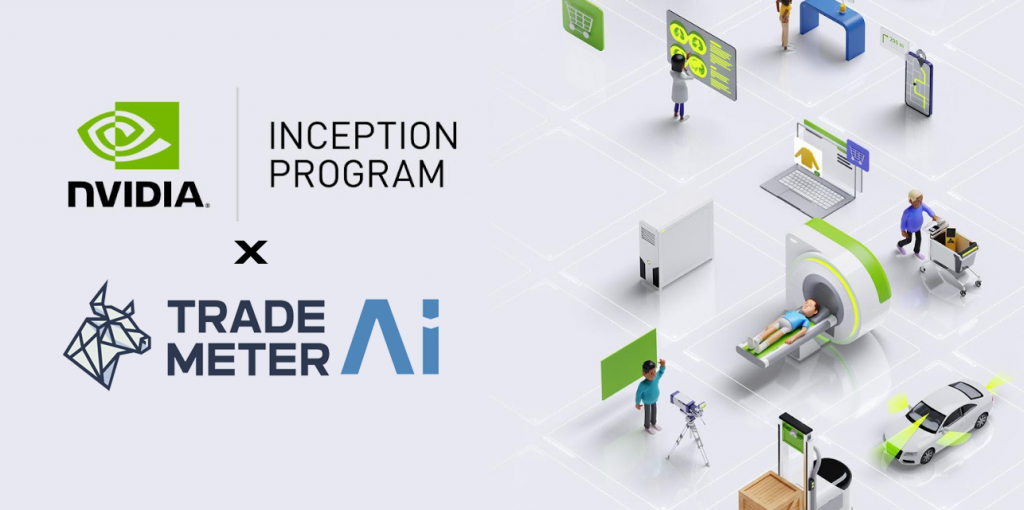20 Recommended Suggestions For Choosing Ai Investing Websites
20 Recommended Suggestions For Choosing Ai Investing Websites
Blog Article
Top 10 Tips On Pricing And Costing Of Ai Stock Predicting/Analysing Trading Platforms
To make the most of your investment, it's crucial to be aware of and compare pricing for AI software that predicts and analyzes stocks. Understanding the pricing structure is important for making an informed choice. Here are ten top suggestions to help you analyze the price and value of these platforms.
1. Understanding Pricing Model
Subscription-based platforms: Find out whether you are required to pay either a monthly or annual cost. Also, find out what features are included in each level.
Pay-per-use : Verify that the platform charges you according to the usage (e.g. trades, requests for information, or forecasts).
Freemium model: Check whether it provides an initial free version with limitations in functionality, and charges for premium features.
2. Compare Pricing Tiers
Compare the features of the various price levels, e.g. Basic, Professional, Enterprise.
Scalability. Make sure you are getting the best price to meet your requirements.
Upgrade flexibility: Find out if your plan can be easily upgraded or downgraded as your needs change.
3. Evaluate Hidden Costs
Data fees: Check whether there are additional fees for premium data (e.g. live data, or advanced analytics).
Brokerage charges Check to see if the platform has additional charges to conduct trades or to integrate with brokers.
API usage - Determine if there are any additional costs that come with API access and/or high-frequency usage.
4. Check out free demos and trials
Trial period: Try platforms that offer a free trial or demo so that you can try out their features.
Check the limitations on the trial version for free. It may not have all the features.
There is no commitment option If you aren't satisfied with the service, you are able to cancel it without any charge.
5. Be sure to check for discounts and promotions.
Annual discounts: Determine whether your platform provides discounts on subscriptions that are payable annually as opposed to plans that are paid monthly.
Referral programs. Find out if the platform provides credits or discounts for referring users.
Pricing for institutions In the event that you are part of an organization which is larger, inquire about pricing for bulk orders or institutions.
6. Evaluate the Return on Investment (ROI)
Value and cost: Examine the price of a platform with its features. For instance, does it aid you in making a better decisions in trading or help you reduce time.
Examine the platform's performance track record or user testimonials to determine its potential return on investment.
Alternative costs - Compare the platform's price with the cost that could be incurred if you don't use it (e.g., missed chance, analysis time manually).
Review Cancellation Policy Policies for Review
Conditions for cancellation: Make sure that you can cancel your subscription without penalty or hidden costs.
Refund policy: Find out whether the platform allows refunds on unused portions of your subscription.
Auto-renewal Check to see whether your subscription renews automatically and also learn how to choose to stop it.
8. Transparency in pricing is crucial.
Clear pricing: Make sure that the pricing of the platform is clearly stated and includes no hidden charges.
Customer support: Contact customer service to clarify any pricing issues or costs.
Contract Terms: Check the conditions of service for any penalties or long-term agreements.
9. Compare yourself with your competitors
Comparison of features: Compare the pricing and features of the platform to the competition to ensure that you're getting the most value for money.
User feedback: Find out what other people think about the platform to determine if it is worth the cost.
Market positioning: Determine whether the platform is priced as a premium, mid-tier, or budget option and whether it meets your expectations.
10. Think about the long-term costs
Price increases: Look at the history of the platform in the past and see how frequently it has raised prices.
Features that are added: Find out whether your current plan contains new features or needs an upgrade.
Scalability costs: Ensure the pricing of your platform is reasonable in the event that your trading activities or data requirements grow.
Bonus Tips:
Try out multiple platforms. Try them all out during a free trial to compare their performance.
Negotiate your pricing. If you're part of a larger institution or you're using the product in large amounts, discuss pricing options that are custom.
Find educational resources on the internet: Some platforms offer free educational tools or resources that add value over the core features of their platform.
Follow these tips to assess the price and cost of AI platform for analyzing and predicting stocks. Select one that is compatible with your requirements and is with your budget. A well-priced platform should provide an appropriate balance of affordability and functionality, helping you achieve the best results from your trading. Follow the recommended here for website recommendations including chart ai for trading, trading with ai, free ai trading bot, ai investment advisor, ai stock picks, ai investing, ai copyright trading bot, trading chart ai, ai trader, ai stocks and more.
Top 10 Tips To Evaluate The Risk Management Of Ai Stock Predicting/Analyzing Trading Platforms
Risk management is a vital aspect of any AI trading platform that predicts or analyzes stocks that helps safeguard your capital and reduce the risk of losses. A platform that has robust tools for managing risk will help navigate volatile markets and allow you to make educated decisions. Here are 10 top tips to help you assess the risk management abilities of these platforms.
1. Study Stop-Loss Features and Take Profit features
Configurable settings: Ensure that you can set the limit of take-profit or stop-loss for certain trades.
Check if you can use trailing stops. They will automatically adjust if market conditions shift towards your advantage.
Guaranteed stops: Check if the platform offers guarantees on stop-loss orders that guarantee that your position will be closed at the exact price regardless of market volatility.
2. Assessment Position Sizing Instruments
Fixed amount: Make sure the platform you are using allows you to set position sizes in accordance with a set amount.
Percentage in your portfolio: You can manage your risk by setting position sizes proportionally as per percentage.
Risk-reward ratio: Verify whether the platform allows setting risk-reward ratios on individual strategies or trades.
3. Check for Diversification Assistance
Multi-asset trading: Make sure the platform you choose to use allows traders to trade across various types of assets, including ETFs, stocks, as well as options. This can help you diversify your portfolio.
Sector allocation: Ensure that the platform is equipped with tools to monitor the exposure of different sectors.
Geographic diversification - Verify that the platform supports trading on international markets. This will allow you to diversify geographical risk.
4. Review the margin and leverage controls
Margin requirements. Be aware of the requirements for margin prior to trading.
Check to see if you can set leverage limits in order to limit risk exposure.
Margin call: Make sure that the platform is providing prompt notifications regarding margin calls. This could help prevent account closure.
5. Assess Risk Analytics and Reporting
Risk metrics. Make sure that your platform is equipped with the most important risk indicators (e.g. VaR, Sharpe Ratio, Drawdown) relevant to your portfolio.
Scenario Analysis: Determine the platform you use allows the ability to simulate various market scenarios in order to assess possible risks.
Performance reports: Make sure the platform provides you with detailed reports on performance, as well as returns that are risk-adjusted.
6. Check for Real-Time Risk Monitoring
Monitoring of portfolios - Make sure that the platform you choose has real-time monitoring in order to ensure your portfolio is safe.
Alerts: See if you receive real-time alerts for risk related (e.g. stop-loss triggers and margin breaches).
Risk dashboards: Ensure that your platform offers customizable risk dashboards to give you a full view of your profile.
7. Evaluation of Stress Testing and Backtesting
Stress testing: Ensure that the platform allows you to stress test your portfolio or strategies in extreme market conditions.
Backtesting - Find out the platform you use allows you to backtest strategies with previous information. This is a great way to assess the risks and determine performance.
Monte Carlo: Verify the platform's use of Monte-Carlo-based simulations for assessing the risks and modeling a range or possible outcomes.
8. Risk Management Regulations: Assess compliance
Regulatory compliance: Ensure the platform is compliant with applicable rules for risk management (e.g., MiFID II in Europe, Reg T in the U.S.).
Best execution : Examine to find out if your platform uses best execution procedures. This guarantees that trades are executed for the best possible price, minimising the chance of slippage.
Transparency: Find out if the platform provides clear and transparent disclosures about risks.
9. Verify for User Controlled Risk Parameters
Custom Risk Rules: Make sure you can define custom rules for risk management (e.g. an amount that is the maximum daily loss, a maximum size of a tradable position).
Automated risk management: Make sure that the platform implements the risk management guidelines automatically based upon your predefined requirements.
Make sure the platform supports manual overrides to automated risk controls.
10. Review User Feedback and Case Studies
User reviews: Review reviews from customers to evaluate the effectiveness of the platform in risk management.
Testimonials and case studies: These will highlight the platform’s risk management capabilities.
Community forums - Search to see if the platform offers a user community that is active and where traders can discuss their risk management strategies.
Bonus Tips
Trial period: You may make use of a demo or a no-cost trial to try out the risk management tools available on the platform.
Support for customers: Ensure that the platform provides a solid support regarding risk management related problems or queries.
Educational resources: See whether the platform offers education resources or videos on best practices in risk management.
By following these tips and techniques, you will be able to assess the risks management capabilities of AI trading platforms that predict or analyze stocks and ensure you select one that will protect your capital and minimize potential losses. Robust risk management tools are vital to navigate the volatile markets and achieving long-term trading success. Follow the best funny post about trader ai review for website info including chart analysis ai, trading ai bot, trading with ai, ai hedge fund outperforms market, best ai etf, copyright ai trading bot, incite, trade ai, ai stock price prediction, stock analysis app and more.